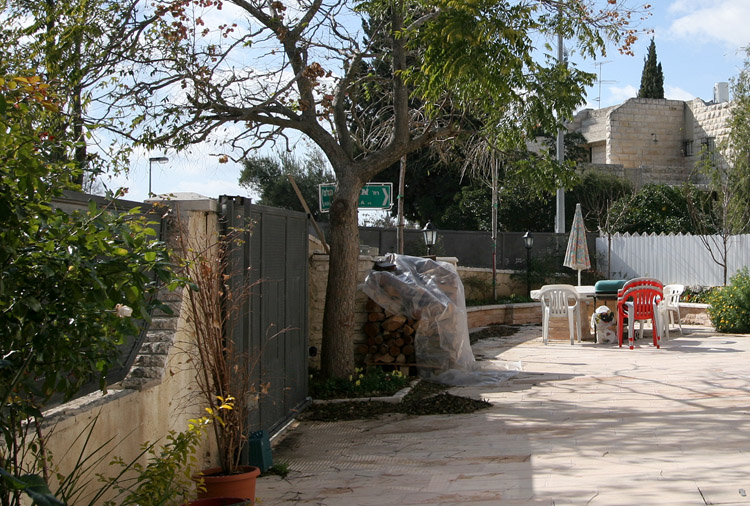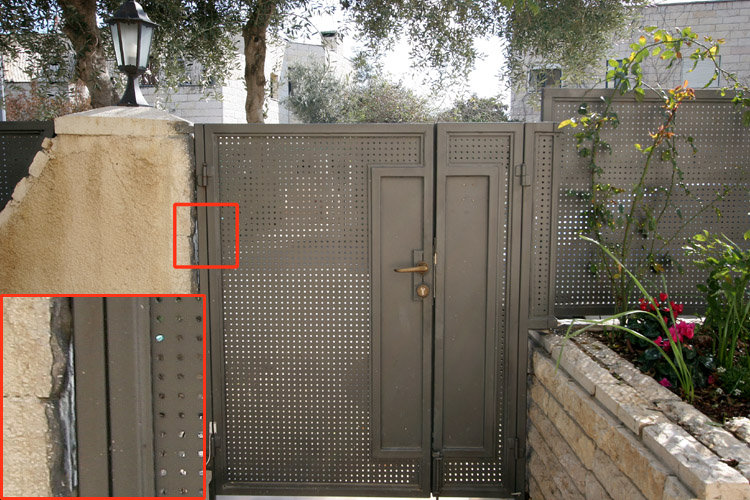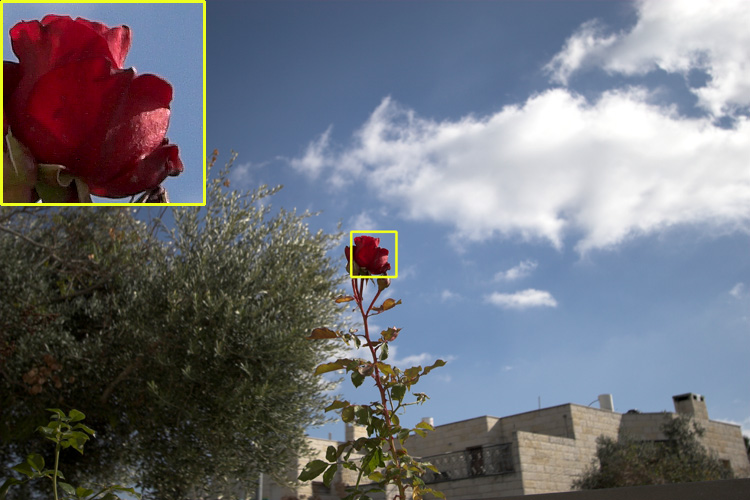|
This is a relatively new Canon lens, member of the EFS family, which fits into a limited number of DSLRs because of its extended physical structure. Its zoom range, which is 10-22, brings it, following the crop factor, to a focal length of 16-35, reminding me of the 16-35 lens designed for FF, which I have tested in the past.
This lens must be compared to the Nikon 12-24 (which is its main competitor), so the following is a table summarizing the characteristics of both lenses: It is apparent that these lenses have some common parameters. The obvious differences are – fewer elements on Nikon’s lens (the Aspherical elements are more complicated there), Canon’s lens is 1 fourth lighter than the Nikon lens. Canon has a shorter minimal focal length and larger enlargement. Nikon has an aperture of 7 leaves while Canon’s has 6 (they are both rounded).
The Canon lens is wide – wider by 2mm than the Nikon (which is quite a lot).
The Canon price is lower by $230.
Three other lenses are considered to be significant players in the ultra-wide field: Tokina, Tamron and Sigma. They don’t cost as much as the Canon or (clearly) the Nikon lens.
Several aspects are tested when checking a lens and especially an ultra wide-angle lens, we will discuss them one-by-one and see how the Canon lens did.
- The sharpness: it is a very sharp lens, even at a wide-open aperture at the center of the frame, when the sharpness drops a little in the edges, but not significantly. With a wide-open aperture, the lens reaches its maximum sharpness at half the zoom range, which is about 15mm; it is not as sharp at 10mm and 22mm. It achieves uniform sharpness – which is its maximal sharpness – at aperture 5.6. Beyond that, the sharpness declines, and I can’t understand why Canon equipped this lens with an f:27 aperture at the 22mm side – its sharpness is very low with this aperture. I do not recommend working with an f:8 aperture or above, at least at the wide-angle side if you want to preserve its good sharpness.
- The flare –practically, this lens does not have a flare at all. Even when the sun is captured in the frame, you have to really try hard to rescue a glimpse of flare. The optical coatings are of very high quality.
- Contrast – this lens has good contrast, and the pictures it produces in changing light conditions present good contrast and sharpness.
- Microcontrast – the capability to separate tiny elements with similar hue. This lens does it very well.
- Color/shade - the lens produces correct colors, with no hue changes.
- Vignetting – a serious disease for wide-angle lenses. The lens shows slight vignetting, which it should not produce. Vignetting is quite small and disappears when closing the aperture, but it’s a pity to have it there.
- Color distortion (CA) – the lens produces an acceptable amount of CA at the frame edges.
- Space distortion – barrel distortion and pin cushion distortion. This lens produces a practically marginal and insignificant distortion. A great achievement for this type of lens.
- Bokeh – the lens produces an acceptable Bokeh as expected from its 6 rounded leaves design. You must be cautious not to include small bright elements in the background, but since the lens is designated for panoramic photographing and interior wide-angle photography, the Bokeh quality is meaningless. You won’t go and photograph flowers or portraits with this lens.
This lens shows what lenses of this kind know – beautiful dark blue skies – without a polarizer, and the perspective problem. If you do not hold it parallel to the ground – but exactly parallel just like a leveler, the houses “lie down” outward or inward when photographing in an urban environment.
The Nikon 12-24 lens created a great precedent at its time, it took the competitors quite a while to catch-up with an ultra-wide angle lens, and the “alternative” or “compatible” companies did their best - optic-wise to lift their standard relative to Nikon and they all failed. The only one that did better than the others was Tokina with its DX 12-24mm f/4 AT-X Pro, but it did not get very close to the Nikon lens.
It took Canon quite a while to design a lens, which is comparable to the Nikon lens, and the short experience I had with it showed a similar performance. Later on I will give an example of the “real” use of a wide-angle Nikon lens.
The following are the test results, first comes first – the lens: The lens produces good neutral saturated colors:  | | Model: Canon EOS 20D Exposure Time: 1/1000sec F Number: 4.5 Focal Length: 20mm Exposure Program: Aperture priority Exposure Bias Value: 0 ISO Speed Ratings: 100 Metering Mode: Partial White Balance: Auto white balance Flash: Flash did not fire, compulsory flash mode Date Taken: 2006:01:21 13:14:51 Color Space: sRGB |
Sharpness test – at zoom state 10mm – aperture 4:  | | Model: Canon EOS 20D Exposure Time: 1/2500sec F Number: 4 Focal Length: 10mm Exposure Program: Aperture priority Exposure Bias Value: 0 ISO Speed Ratings: 100 Metering Mode: Partial White Balance: Auto white balance Flash: Flash did not fire, compulsory flash mode Date Taken: 2006:01:21 13:12:53 Color Space: 65535 |
The sharpness at the frame center is excellent, not that good at the edges but still not bad at all. Even in the 22mm state, the sharpness is very good, even with a wide-open aperture – 4.5:
 | | Model: Canon EOS 20D Exposure Time: 1/200sec F Number: 4.5 Focal Length: 22mm Exposure Program: Aperture priority Exposure Bias Value: 0 ISO Speed Ratings: 100 Metering Mode: Partial White Balance: Auto white balance Flash: Flash did not fire, compulsory flash mode Date Taken: 2006:01:21 13:15:10 Color Space: sRGB |
The difference in sharpness between the frame center and the edges is minor. It reaches its utmost sharpness somewhere in the middle, at 15mm, and with aperture 5.6, it is sharp all through the range of the focal lengths. The microcontrast is also excellent:  | | Model: Canon EOS 20D Exposure Time: 1/640sec F Number: 4.5 Focal Length: 22mm Exposure Program: Aperture priority Exposure Bias Value: 0 ISO Speed Ratings: 100 Metering Mode: Partial White Balance: Auto white balance Flash: Flash did not fire, compulsory flash mode Date Taken: 2006:01:21 13:14:09 Color Space: 65535 |
If the sun is included at the corner of the frame – it is difficult to obtain flare even with 10mm:
 | | Model: Canon EOS 20D Exposure Time: 1/4000sec F Number: 4 Focal Length: 10mm Exposure Program: Aperture priority Exposure Bias Value: 0 ISO Speed Ratings: 100 Metering Mode: Partial White Balance: Auto white balance Flash: Flash did not fire, compulsory flash mode Date Taken: 2006:01:21 13:12:15 Color Space: 65535 |
But with 22mm, the sun within the frame corner does not create flare, but a kind of a star of light:
 | | Model: Canon EOS 20D Exposure Time: 1/8000sec F Number: 4.5 Focal Length: 22mm Exposure Program: Aperture priority Exposure Bias Value: 0 ISO Speed Ratings: 100 Metering Mode: Partial White Balance: Auto white balance Flash: Flash did not fire, compulsory flash mode Date Taken: 2006:01:21 13:12:21 Color Space: 65535 |
If we move the sun closer to the center of the frame at a 22mm state, we can see a hint of coloring within the spot of light:
 | | Model: Canon EOS 20D Exposure Time: 1/6400sec F Number: 4.5 Focal Length: 22mm Exposure Program: Aperture priority Exposure Bias Value: 0 ISO Speed Ratings: 100 Metering Mode: Partial White Balance: Auto white balance Flash: Flash did not fire, compulsory flash mode Date Taken: 2006:01:21 13:13:36 Color Space: 65535 |
The lens shows very good performance and it is actually flare-resistant. Perhaps even more than the Nikon lens with which I managed to capture flare here and there. The lens maintains details and good contrast even when shooting against backlight – indicating excellent lens coating:  | | Model: Canon EOS 20D Exposure Time: 1/1600sec F Number: 4.5 Focal Length: 22mm Exposure Program: Aperture priority Exposure Bias Value: 0 ISO Speed Ratings: 100 Metering Mode: Partial White Balance: Auto white balance Flash: Flash did not fire, compulsory flash mode Date Taken: 2006:01:21 13:12:55 Color Space: 65535 |
The next picture shows slight vignetting at the frame edges, as indicated by the red arrow. This should not appear with such a lens having a short-ranged zoom. Closing the aperture lessens and even eliminates vignetting. The next photo also shows the lens’s CA residues (color fringes at the edges) at the frame corners, with a 100% crop. The level of CA is insignificant and can be tolerated:
 | | Model: Canon EOS 20D Exposure Time: 1/1600sec F Number: 4.5 Focal Length: 22mm Exposure Program: Aperture priority Exposure Bias Value: 0 ISO Speed Ratings: 100 Metering Mode: Partial White Balance: Auto white balance Flash: Flash did not fire, compulsory flash mode Date Taken: 2006:01:21 13:12:55 Color Space: 65535 |
And, to show a practical use of the ultra wide lens, here is a photo of the Nikon lens at the INVALID in Paris. It is very hard to level while hand held shooting. With the Nikon (and also the Canon) lens, one can take a photo hand hels at very low speeds because of the wide angle, and I achieved exposures longer than one second with the Nikon 12-24 achieving absolutely reasonable results. This picture was taken, hand-held, at 1/30 of a second:  | | Model: NIKON D100 Exposure Time: 1/30sec F Number: 4 Max Aperture Value: 4 Focal Length: 12mm Exposure Program: Aperture priority Exposure Bias Value: 0 Metering Mode: Center Weighted Average White Balance: Auto white balance Flash: Flash did not fire Focal Length In 35mm Film: 18 Date Taken: 2003:10:22 14:39:24 Color Space: sRGB |
To summarize it all- I encountered the Canon ultra-wide lens , which was thoroughly slandered when it just appeared (perhaps the early series were not quite “ripe”). The lens I had, successfully addressed all of the ultra wide lens requirements. It is not heavy at all, it focuses quickly, it produces detailed and sharp pictures and it is practically flare-free. This is the natural choice for those who want a Canon lens that will cover a wide angle. Some advice – this lens corresponds to a limited number of cameras with a crop factor of 1.6. If I where a Canonist I would wait and see what types of new cameras Canon will launch in the upcoming months. Since Canon did not give a clear statement regarding that crop factor (unlike Nikon, who stated more than once that it will maintain the current factor x1.5), it is well worth waiting to see where Canon is heading. The bottom line is: if you have the means, and you are watchful regarding Canon’s intentions – this is a highly recommended lens for ultra wide photography. |





